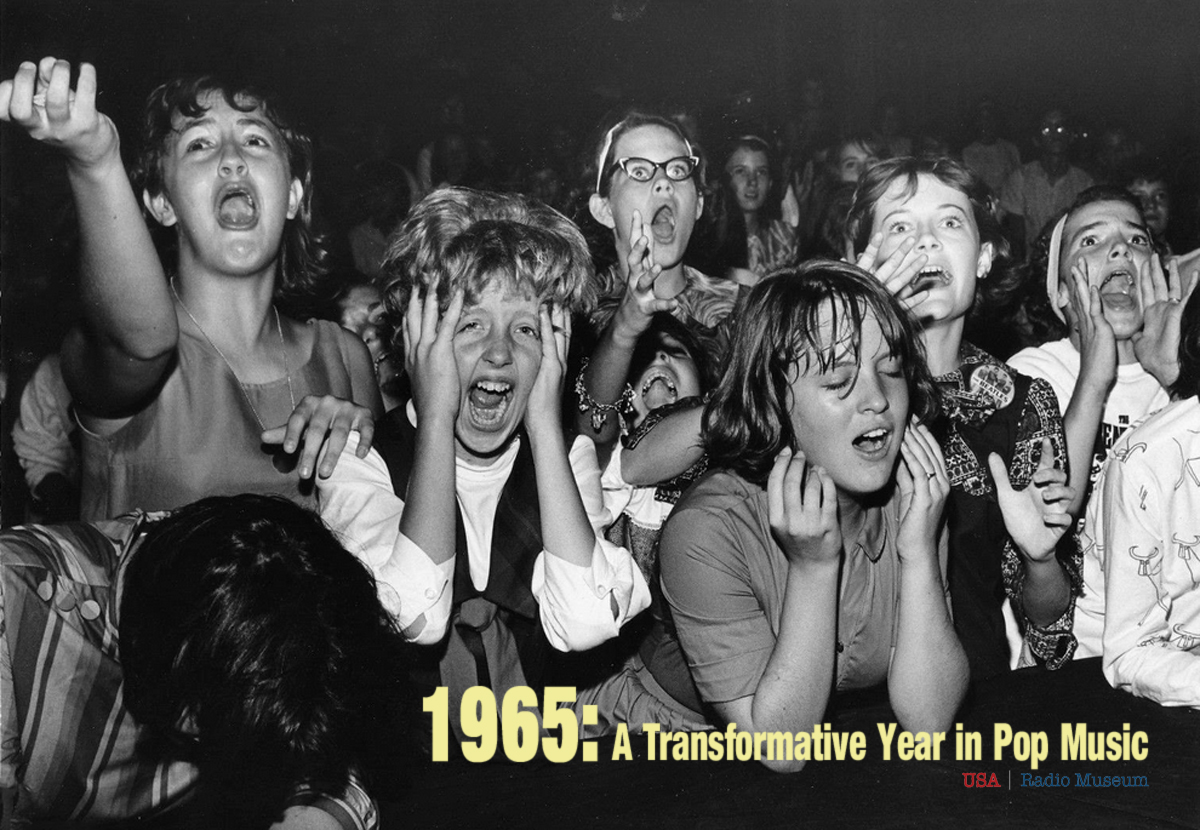1965 Was a Year That Redefined Pop Music The year 1965 was nothing short of revolutionary for popular music. It wasn't just another step in the
1965 Was a Year That Redefined Pop Music
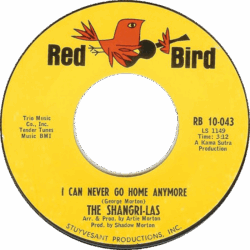 The year 1965 was nothing short of revolutionary for popular music. It wasn’t just another step in the evolution of sound; it was a bold leap that completely altered the musical landscape. While 1964 introduced the explosion of Beatlemania and the first waves of the British Invasion, 1965 brought depth, innovation, and diversification that forever changed the industry. Artists began experimenting with new sounds, genres blended and crossed over, and music became a powerful voice for cultural and social movements.
The year 1965 was nothing short of revolutionary for popular music. It wasn’t just another step in the evolution of sound; it was a bold leap that completely altered the musical landscape. While 1964 introduced the explosion of Beatlemania and the first waves of the British Invasion, 1965 brought depth, innovation, and diversification that forever changed the industry. Artists began experimenting with new sounds, genres blended and crossed over, and music became a powerful voice for cultural and social movements.
In 1964, the charts were dominated by infectious melodies, sing-along harmonies, and the upbeat energy of emerging British acts like The Beatles and The Dave Clark Five, as well as Motown artists like The Supremes and Marvin Gaye. By 1965, however, music had grown up—it started to reflect the complexities of a world in transition. Folk went electric, soul grew deeper and funkier, rock became louder and more rebellious, and pop reached new levels of sophistication. The hits of 1965 were not just songs; they were cultural markers, setting the stage for the counterculture movement that would define the rest of the decade.
The Billboard Year-End Hot 100 singles of 1965 featured some of the most iconic tracks of the decade. Here are the Top 10 songs for the year, based on their performance on the Billboard charts:
- “Wooly Bully” – Sam the Sham and the Pharaohs
- “I Can’t Help Myself (Sugar Pie Honey Bunch)” – Four Tops
- “(I Can’t Get No) Satisfaction” – The Rolling Stones
- “You Were on My Mind” – We Five
- “You’ve Lost That Lovin’ Feelin'” – The Righteous Brothers
- “Downtown” – Petula Clark
- “Help!” – The Beatles
- “Can’t You Hear My Heartbeat” – Herman’s Hermits
- “Crying in the Chapel” – Elvis Presley
- “My Girl” – The Temptations
British Invasion: Expanding Boundaries
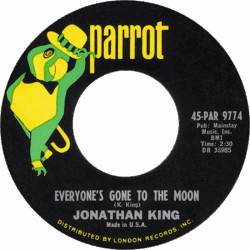 1964 had seen the initial wave of British acts conquering American charts, but 1965 took the British Invasion to new heights. The Beatles didn’t just ride the wave—they became the driving force, releasing their Help! album and embarking on their North American Tour, highlighted by the historic Shea Stadium concert. The Rolling Stones emerged as the gritty, rebellious counterparts to The Beatles, delivering “(I Can’t Get No) Satisfaction”, which captured the frustration and energy of the era.
1964 had seen the initial wave of British acts conquering American charts, but 1965 took the British Invasion to new heights. The Beatles didn’t just ride the wave—they became the driving force, releasing their Help! album and embarking on their North American Tour, highlighted by the historic Shea Stadium concert. The Rolling Stones emerged as the gritty, rebellious counterparts to The Beatles, delivering “(I Can’t Get No) Satisfaction”, which captured the frustration and energy of the era.
Beyond the Fab Four and the Stones, 1965 saw the rise of other British acts like Gerry & The Pacemakers, Peter & Gordon, The Searchers, Jonathan King, Billy J. Kramer & The Dakotas, Herman’s Hermits, Chad & Jeremy, The Hollies, The Kinks, Dusty Springfield, The Who, The Zombies, and Tom Jones, each adding unique elements to the musical tapestry. The Kinks’ power chords laid the groundwork for hard rock, many today have said, was slightly ahead of its time. While Dusty Springfield’s soulful voice demonstrated that British artists could excel in genres beyond rock and pop.
Petula Clark, often referred to as the “First Lady of the British Invasion,” brought a sophisticated pop sound to the charts. Her hit “Downtown” became a global sensation, reaching No. 1 on the Billboard Hot 100. She followed it up with other Top 40 hits like “I Know a Place” and “Round Every Corner”, showcasing her versatility and charm. Clark’s music added a polished, cosmopolitan flair to the British Invasion, appealing to audiences across generations.
The Beatles’ Singles in 1965
The Beatles were incredibly prolific in 1965, releasing numerous singles that became hits. Some of their standout tracks from that year include:
- “Ticket to Ride”: A chart-topping hit from their Help! album.
- “Help!”: The title track of their album and movie, which reached No. 1.
- “Yesterday”: A timeless ballad that became one of their most covered songs.
- “We Can Work It Out”: A double A-side single with “Day Tripper”, showcasing their versatility.
- “Day Tripper”: A rock anthem with an unforgettable riff.
- “Eight Days a Week”: A well harmonized, catchy, hang-clapping tune that topped the charts earlier in the year.
In total, The Beatles released several singles that dominated the charts in 1965, cementing their status as global superstars and pushing the boundaries of pop music.
Motown’s Golden Year
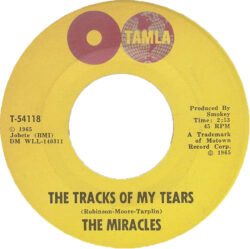 Motown, the label that had been steadily building its reputation, erupted in 1965 as “The Sound of Young America.” Berry Gordy’s faith in his artists and songwriting team paid off spectacularly. The Supremes, Marvin Gaye, The Temptations, and The Four Tops dominated the charts with songs that were polished yet deeply emotional, appealing to audiences across racial and generational divides. Hits like “Stop! In the Name of Love”, “I Can’t Help Myself (Sugar Pie, Honey Bunch)”, and “My Girl” became timeless classics.
Motown, the label that had been steadily building its reputation, erupted in 1965 as “The Sound of Young America.” Berry Gordy’s faith in his artists and songwriting team paid off spectacularly. The Supremes, Marvin Gaye, The Temptations, and The Four Tops dominated the charts with songs that were polished yet deeply emotional, appealing to audiences across racial and generational divides. Hits like “Stop! In the Name of Love”, “I Can’t Help Myself (Sugar Pie, Honey Bunch)”, and “My Girl” became timeless classics.
Jr. Walker & the All Stars added an electrifying energy to Motown’s lineup with their breakout hit, “Shotgun.” The track’s driving saxophone riff and raw, danceable groove made it an instant classic, reaching the Top 10 and becoming one of the most iconic instrumental pieces of the era. Its infectious rhythm brought a fresh, soulful edge to Motown’s already diverse sound.
Motown’s music reflected the optimism and struggles of the Civil Rights Movement, providing a soundtrack for change and unity. Holland-Dozier-Holland’s songwriting genius, including the artistry and hit-writing skills of Smokey Robinson (and was also Motown’s record producer extraordinaire), and Martha Reeves & The Vandellas made Motown’s golden year unforgettable with their monster hit, “Nowhere To Run.”
The Folk Rock Revolution
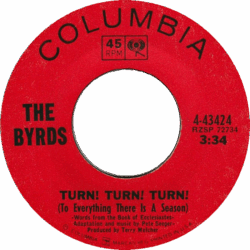 While 1964 celebrated traditional folk music with artists like Joan Baez and Peter, Paul & Mary, 1965 saw folk music go electric. Bob Dylan’s “Like a Rolling Stone” shattered expectations with its poetic lyrics and electrified sound. The Byrds took Dylan’s influence and added jangly guitars to create the folk rock genre, popularizing it with their rendition of “Mr. Tambourine Man”.
While 1964 celebrated traditional folk music with artists like Joan Baez and Peter, Paul & Mary, 1965 saw folk music go electric. Bob Dylan’s “Like a Rolling Stone” shattered expectations with its poetic lyrics and electrified sound. The Byrds took Dylan’s influence and added jangly guitars to create the folk rock genre, popularizing it with their rendition of “Mr. Tambourine Man”.
This innovation inspired artists like Sonny & Cher, Barry McGuire, and The Turtles, while The Lovin’ Spoonful brought a playful twist with “Do You Believe in Magic?”. Folk rock became more than just music—it was a cultural movement, addressing themes of personal freedom, social change, and political protest. And by year’s end, Simon & Garfunkel came into national prominence with their debut single, “Sounds Of Silence.”
West Coast Sophistication: The Beach Boys
 While we enjoyed the West Coast surfing sounds of Jan & Dean, Dick Dale & The Deltones, the Surfaris, and the Beach Boys in 1963-1964, the Beach Boys evolved dramatically in 1965, moving beyond their surf rock roots to explore more sophisticated themes and arrangements. Their hit “California Girls” captured the essence of the California dream, while “Help Me, Rhonda” and “Barbara Ann” showcased their storytelling prowess and spectacular harmony. Brian Wilson’s production genius began to shine, laying the groundwork for their later masterpiece, Pet Sounds. Their music mirrored the sunny optimism of the West Coast, offering an escape and a celebration of youth with a defining new sound for 1965.
While we enjoyed the West Coast surfing sounds of Jan & Dean, Dick Dale & The Deltones, the Surfaris, and the Beach Boys in 1963-1964, the Beach Boys evolved dramatically in 1965, moving beyond their surf rock roots to explore more sophisticated themes and arrangements. Their hit “California Girls” captured the essence of the California dream, while “Help Me, Rhonda” and “Barbara Ann” showcased their storytelling prowess and spectacular harmony. Brian Wilson’s production genius began to shine, laying the groundwork for their later masterpiece, Pet Sounds. Their music mirrored the sunny optimism of the West Coast, offering an escape and a celebration of youth with a defining new sound for 1965.
Soul Music: Emotion and Innovation
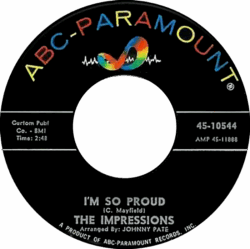 Soul music came into its own in 1965, with Otis Redding’s R&B break-out hit, “Respect”, with James Brown and The Impressions pushing boundaries and delivering songs filled with raw emotion and social commentary. James Brown’s “Papa’s Got a Brand New Bag” and “It’s A Man’s World” pioneered soul-funk, while The Impressions’ defining “Woman’s Got Soul” and their soul-searching “People Get Ready” became an anthem of hope during the Civil Rights Movement.
Soul music came into its own in 1965, with Otis Redding’s R&B break-out hit, “Respect”, with James Brown and The Impressions pushing boundaries and delivering songs filled with raw emotion and social commentary. James Brown’s “Papa’s Got a Brand New Bag” and “It’s A Man’s World” pioneered soul-funk, while The Impressions’ defining “Woman’s Got Soul” and their soul-searching “People Get Ready” became an anthem of hope during the Civil Rights Movement.
Blue-eyed soul artists like The Righteous Brothers (“Unchained Melody” and “You’ve Lost That Lovin’ Feelin’”) and Roy Head (“Treat Her Right” and “Just A Little Bit”) brought soul to wider audiences, while Barbara Mason’s “Yes, I’m Ready” was a significant hit in 1965, reaching No. 5 on the Billboard Hot 100 and No. 2 on the Billboard R&B chart. It was her breakout single and remains her most iconic song hit that year, showcasing her soulful voice and romantic lyrics. When paired with classics like “Make Me Your Baby” and “Baby, I’m Yours,” it perfectly captures the soulful romance of 1965. Both Barbara Mason and Barbara Lewis had a way of conveying such heartfelt emotion in their performances, which is why their songs still resonate so strongly today. And of course, Little Anthony & the Imperials delivered ballads that tugged at the heartstrings of young adolescent teens in 1965.
Country Music’s Crossover Success
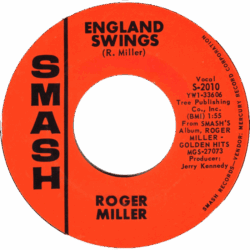 Roger Miller became a household name with his clever, humorous, and heartfelt songwriting. His crossover mega-hit “King of the Road” soared to the top of the charts, blending country sensibilities with a laid-back pop vibe that appealed universally. Other hits like “Engine, Engine #9” and “Kansas City Star” showcased his knack for combining wit with memorable melodies. Miller’s work in 1965 earned him a whopping six Grammy Awards, cementing his place as a crossover trailblazer.
Roger Miller became a household name with his clever, humorous, and heartfelt songwriting. His crossover mega-hit “King of the Road” soared to the top of the charts, blending country sensibilities with a laid-back pop vibe that appealed universally. Other hits like “Engine, Engine #9” and “Kansas City Star” showcased his knack for combining wit with memorable melodies. Miller’s work in 1965 earned him a whopping six Grammy Awards, cementing his place as a crossover trailblazer.
Eddy Arnold continued to bridge the gap between country and pop with his velvety voice. His heartfelt ballad “Make the World Go Away” reached No. 6 on the Billboard Hot 100, marking one of the genre’s most significant crossover successes. The song’s orchestral arrangement and Arnold’s emotive delivery appealed to both country traditionalists and pop audiences, embodying the genre’s evolving sound.
Buck Owens and his Buckaroos revolutionized country music with the Bakersfield Sound—a rawer, more electric style that contrasted with Nashville’s polished productions. Songs like “I’ve Got a Tiger By the Tail” and “Before You Go” not only dominated country charts but also drew in rock and pop fans, influencing artists like The Beatles. Owens’ upbeat tempos and twangy guitars brought a fresh energy to country music, solidifying his role as a key figure in its crossover success.
Loretta Lynn began carving out her legacy in 1965 with songs like “Happy Birthday” and “Blue Kentucky Girl.” Her down-to-earth storytelling and powerful vocals resonated with both rural and urban audiences, making her a rising star poised to become the Queen of Country Music.
Johnny Cash, already a towering figure in the music world, brought his signature gravitas to songs like “Orange Blossom Special.” His unique ability to infuse traditional country with folk, gospel, and even rock elements ensured his appeal to a wide audience. Cash’s music in 1965 reflected his unmatched storytelling prowess and timeless style.
Jim Reeves, often referred to as “Gentleman Jim,” continued to touch hearts even after his untimely death in 1964. Hits like “Is It Really Over?” and “This Is It” showcased his smooth vocals and sophisticated approach, which helped elevate country music into the pop realm.
Expanding the Genre’s Reach
Crossover success wasn’t just about the artists—it was about the evolution of country music itself. Producers and songwriters were embracing more sophisticated arrangements, blending strings and orchestration into their tracks. This approach brought a cinematic quality to the music, making it accessible to a broader audience while retaining its heartfelt, authentic core.
Cultural Impact
The crossover appeal of country music in 1965 helped bridge the gap between rural and urban America, uniting audiences through shared emotions and universal themes. It was a year that proved country music could resonate far beyond its traditional base, setting the stage for even greater innovations in the years to come.
1965 Was A Year of Unforgettable Hits
 From the gritty hit single by the The Rolling Stones (“The Last Time”), to the pop hits sounds of The McCoys (“Hang On Sloopy”), The Yardbirds (“For Your Love”), and Gary Lewis & the Playboys (“This Diamond Ring”) then back to the soulful harmonies of Motown and the poetic introspection of folk rock, 1965 was a year where every corner of the music world flourished. It wasn’t just a continuation of 1964—it was a reinvention. The hits of 1965 reflected the hopes, fears, and dreams of a generation, making it one of the most seminal years in pop music history.
From the gritty hit single by the The Rolling Stones (“The Last Time”), to the pop hits sounds of The McCoys (“Hang On Sloopy”), The Yardbirds (“For Your Love”), and Gary Lewis & the Playboys (“This Diamond Ring”) then back to the soulful harmonies of Motown and the poetic introspection of folk rock, 1965 was a year where every corner of the music world flourished. It wasn’t just a continuation of 1964—it was a reinvention. The hits of 1965 reflected the hopes, fears, and dreams of a generation, making it one of the most seminal years in pop music history.
_____________________
A USARM Viewing Tip: On your mobile or tablet device? Finger-tap the above images (in the post) and stretch image across your device’s screen for LARGEST digitized view.

